Fortunately I’m young enough to have never suffered through the days of when people were allowed to smoke onboard trains in Victoria, but can remember when people were allowed to smoke at railway stations. So here is a quick history of when smoking bans were introduced.
Back in the bad old days
Going back the very start of trains in Victoria, entire carriages were designated as ‘smoking’ and ‘non-smoking’.
But with the introduction of electric suburban trains from 1919, carriages were divided up instead – three smoking and six non-smoking compartments, with a full length partition dividing the two.
This layout was retained in Harris trains of the 1950s.
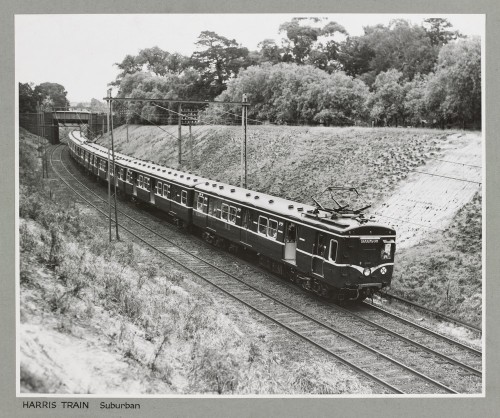
SLV image H31188. Photographer unknown. Undated but circa 1956 to 1968.
Country trains also had separate smoking and non-smoking compartments – for example the ‘Z’ type saloon carriages divided into two sections, the first class carriages having 20 smoking and 28 non-smoking seats, while second class had 24 smoking and 40 non-smoking seats.
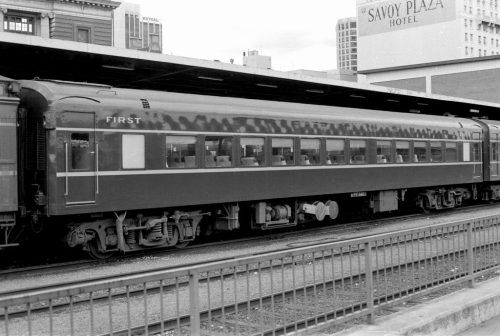
Rob O’Regan at www.robx1.com (002.AL633.b)
But in October 1971 thanks to the upcoming stainless steel ‘Hitachi’ trains, smoking and non-smoking accommodation on suburban trains was changed back to a whole carriage arrangement – ‘motor’ carriages being for smoking, and ‘trailer’ carriages non-smoking – which when usually marshaled in a 50/50 ratio, gave more space for smokers.
And the start of smoking bans
15 November 1976 was a breath of fresh air for Melburnians – the state government banned smoking onboard all public transport vehicles.
In what might have been the first such ban in Australia.
Smoking will be banned on all Melbourne public transport from November 15.
The Minister for Transport, Mr Rafferty, said today that the ban would apply on all of the city’s electric trains, trams and government buses.
“I believe the great majority of the travelling, public will strongly support the decision”, he said.
The ban was designed to promote cleanliness, improve passenger comfort and reduce vandalism.
The NSW Minister for Transport, Mr Cox, said tonight that he ‘could see no point in “rushing in” with similar legislation for NSW without all points of view being considered.
Mr Cox said he was aware of “a certain resentment”. among smokers who could no longer smoke, particularly on long journeys.
The smoking ban was also welcomed by the Victorian Railways, as it made running their railway easier.
The banning of smoking on suburban trains, by Government request, as from 15 November 1976, has resulted in increased cleanliness at lower cost, greater comfort for the majority of passengers, and more flexible train operations because it is no longer necessary to consider the location of smoking compartments in the consists of trains. The ban has resulted in no detectable loss of patronage and must be regarded as a successful innovation.
December 1986 saw smoking banned from first-class V/Line carriages and onboard V/Line road coaches, then on 3 April 1989 smoking was banned from all V/Line trains.
The Victorian Government will ban smoking on all Victorian country trains from April 3.
The Transport Minister, Jim Kennan, announced the move yesterday. It follows a December 1986 decision to ban smoking in first-class sitting carriages and in V/Line road coaches.
Smoking was banned on Melbourne suburban public transport in 1978.
There had also been a progressive reduction in the capacity for smokers in economy-class carriages on V/Line’s intrastate rail services.
And now for stations
The opening of the City Loop in the 1980s appears to be another move towards smoking bans, if these Metropolitan Transit Authority-era ‘no smoking’ signs are anything to go by.
But it took until March 2006 for smoking bans to be introduced at outdoor railway stations.
But these bans only applied to covered areas.
Smokers who light up under covered areas at Victoria’s train station platforms, tram and bus shelters will face a stiff fine from today.
Transport Minister Peter Bachelor said areas where smoking is prohibited include all spaces where the cover was specifically provided for sheltering people.
“A covered area means any part of a train platform, tram or bus shelter that has a roof overhead, regardless of its height,” Mr Batchelor said.
He said it did not include covered areas like shop awnings, verandahs or overhanging balconies where the cover is intended for use other than to shelter people waiting for public transport.
Mr Batchelor said complaints from commuters about people smoking under covered areas at train station platforms and tram and bus shelters prompted the government to change the law.
But a roof doesn’t make a difference to secondhand smoke on a station platform.
And so in 2014 the smoking bans were extended to the entire station platform and tram stop platform.
From Saturday 1 March 2014, all areas of train stations and raised platform tram stops will be smoke free, increasing the comfort for customers who travel on Victoria’s public transport network.
The new arrangements will extend the existing smoke free zones, which already include covered areas of train platforms and under covered tram and bus shelters.
The fine for smoking in a smoke free area on public transport is $212 for adults and $72 for children.
Signage and information at stations will help to raise public awareness of the extended smoke free areas.
The plague of vapes
Disposable vapes are a joke of a product, with a rechargeable lithium-ion battery inside that goes straight into the bin once the vape juice is used up, but for once the government is actually ahead of them from a legislative perspective – from 1 August 2017 laws were updated to ban the use of e-cigarettes in places smoking is also banned.
However updated signage didn’t start appearing at railway stations until 2022.
Footnote: other modes of transport
Interstate coach operators started introducing non-smoking buses from 1987.
Ansett Pioneer will ban smoking on some express coaches running daily between Melbourne, Sydney and Brisbane next month, after having tested the demand with three of its 11 daily each-way services between Canberra and Sydney for some time.
Deregulation under the Interstate Road Transport Act has resulted in eight non-smoking coach services a day between Canberra and Sydney, and there is also a direct non-smoking daily service between Canberra and Adelaide, with 10 coachlines taking up the trend around Australia. Greyhound, Redline, Skennars, Transborder and Central Australia Tours Association all have some fully non-smoking services, and others have services with smoking available only in allocated seats at the rear.
The new Ansett Pioneer service is being intro duced “because of public demand”, the general manager of operations, Mr David Raven, said yesterday.
It would be only on the Silver Service express, once daily between Melbourne, Sydney and Brisbane. If demand was sufficient, more would be introduced.
The president of Action on Smoking and Health. Mr Alan Shroot, said yesterday that proprietors were recognising the demand for smoke-free travel, and several state governments had legislated to ensure smoke-free urban bus and intrastate coaches and rail lines.
With smoking bans on aircraft also rolled out during this period.
The Australian Government banned smoking on all flights within Australia by domestic airlines in December 1987 and extended these domestic bans to all services operated by international carriers between airports within Australia from October 1990.
Footnote: an interstate straggler
Trains like the Indian Pacific and The Ghan travel for days across Australia, which might be a problem for a compulsive smoker.
So in 1995 Australian National installed a small smoking compartment in the luggage vans of their trains, which remained available for passengers until 2006.
Smoking will soon be a thing of the past on the Ghan’s railway journeys between Adelaide and Darwin.
An enclosed area for smokers inside the lounge car will removed by October 1.
Great Southern Railways chief executive Tony Braxton-Smith says the company is responding to tougher smoking legislation across most of the country.
He says people will not be able to smoke even once The Ghan crosses into the Northern Territory, where there are few anti-smoking laws.

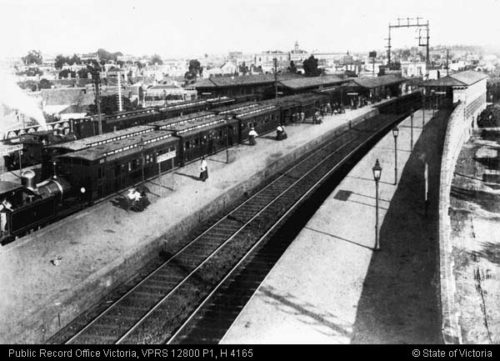
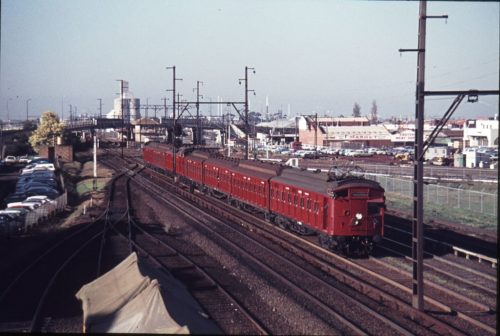
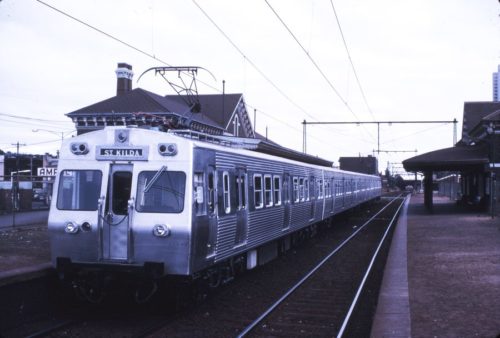
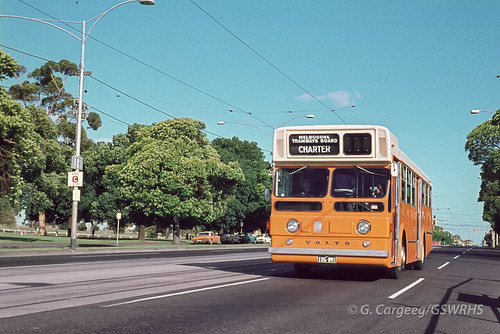
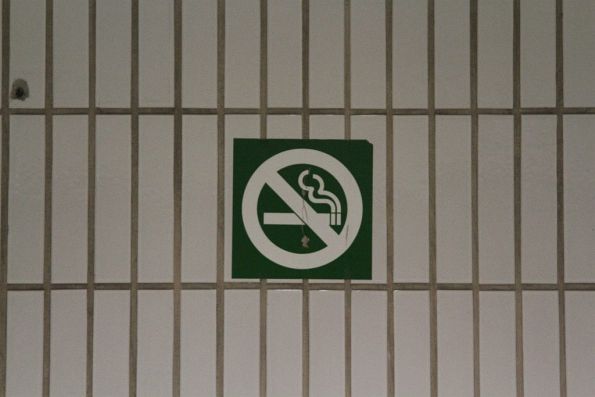
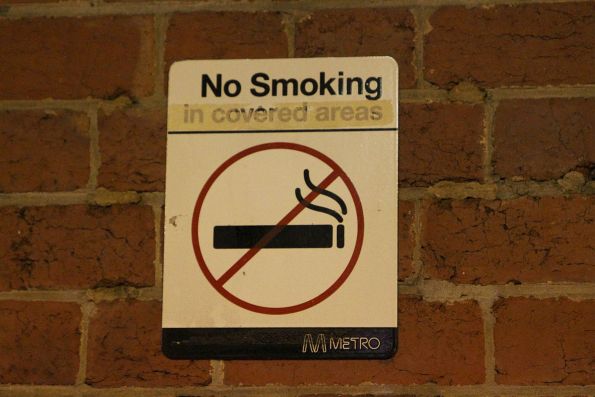
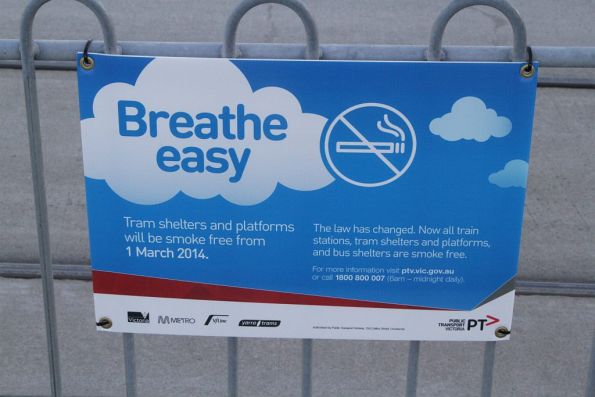
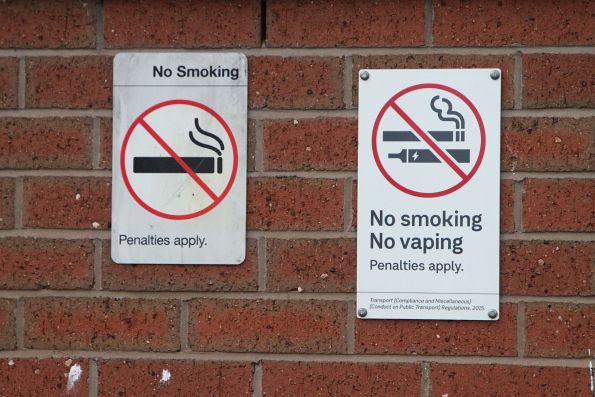
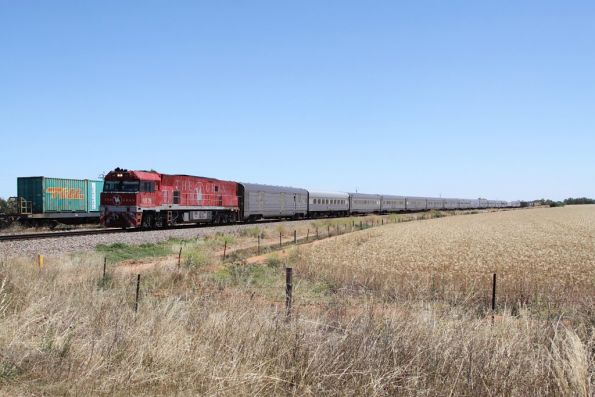

Actually amazing to think it took until 1989 for smoking to be banned on regional trains.
In the Blue Harris trains I remember Non Smoking carriages and Smoking carriages but in the Smoking carriage there was part of it that you could walk through to that was Non Smoking!
Red Rattlers also had this set-up Smoking and Non Smoking carriages, but again in one Smoking carriage part of it had been modified so that again you could walk through into a small Non Smoking section.
Absolutely ridiculous especially, as I sneezed because of the Smoke wafting through to the Non-Smoking section when I had to catch a crowded train at Seaford to get to Melbourne by a certain time.
In the remaining ex ‘Z’ cars, now BZN or BTN, that remain in service as “classic” cars, there is what I believe is the remnant of the dividing bulkhead between smoking/non-smoking seats. It’s just a small section right up on the ceiling, that runs the whole width of the car. Can’t think what else it could be. Next time I’m on one of these, I’ll count the seats either side of it.